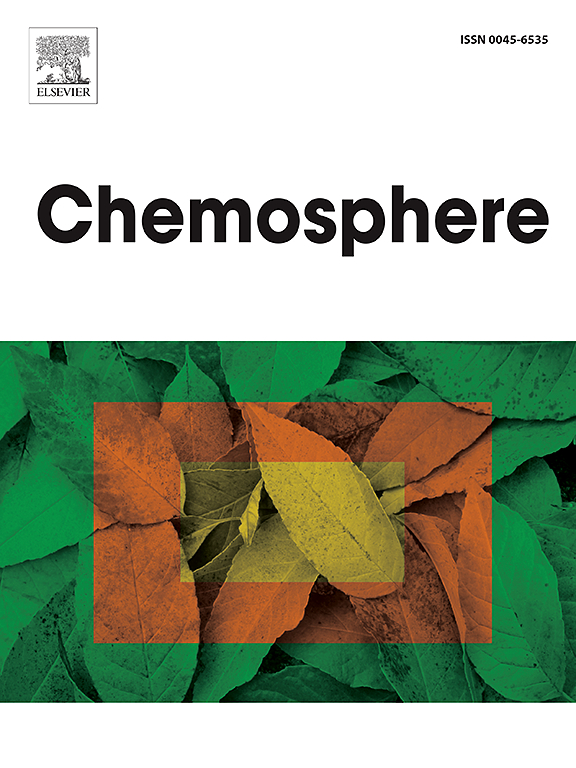Dermal permeation of perfluoroalkyl substances in human skin – An in-vitro study
IF 8.1
2区 环境科学与生态学
Q1 ENVIRONMENTAL SCIENCES
引用次数: 0
Abstract
Per- and polyfluoroalkyl substances (PFAS) are ubiquitous, persistent environmental contaminants, posing significant health risks to animals and humans. While dermal exposure to PFAS through daily contact with consumer products such as school uniforms and personal care items is common, the mechanisms and extent of skin uptake remain poorly understood. This study investigated the dermal penetration of 30 PFAS, both as mixtures and individual compounds, using in vitro human skin models in a Franz Diffusion Cell system. Results showed that in a mixture, short-chain PFAS, including FBSA, PFBA, PFPrS, and PFPeA, demonstrated permeation rates of 4.8 ± 2.5 %, 3.7 ± 0.3 %, 2.0 ± 0.1 %, and 1.1 ± 0.1 %, respectively, over 24 h. In contrast, none of the long-chain PFAS penetrated the skin in the same period. When tested individually in water, FBSA exhibited the highest permeation, achieving 7.0 ± 0.9 % (p < 0.05), underscoring its ability to cross the stratum corneum under simulated environmental conditions. These findings highlight that while permeation of long-chain PFAS could be slowed down by the skin barrier, certain short-chain PFAS, such as FBSA, can penetrate human skin in vitro. This study provides crucial preliminary data on PFAS dermal absorption, emphasizing the need for standardized experimental conditions that account for the chemical properties of PFAS and the physiological properties of human skin. Our findings suggest that further research is needed to elucidate the mechanisms of PFAS dermal absorption and better assess the risk of dermal exposure to PFAS.

全氟烷基物质在人体皮肤中的真皮渗透-一项体外研究
全氟烷基和多氟烷基物质(PFAS)是普遍存在的持久性环境污染物,对动物和人类构成重大健康风险。虽然通过日常接触消费品(如校服和个人护理用品)皮肤接触PFAS是常见的,但皮肤吸收的机制和程度仍然知之甚少。本研究在Franz扩散池系统中使用体外人体皮肤模型研究了30种PFAS的皮肤渗透,包括混合物和单个化合物。结果显示,在混合物中,短链PFAS,包括FBSA, PFBA, PFPrS和PFPeA,在24小时内的渗透率分别为4.8±2.5%,3.7±0.3%,2.0±0.1%和1.1±0.1%。相比之下,长链PFAS在同一时间内没有穿透皮肤。单独在水中测试时,FBSA的渗透率最高,达到7.0±0.9% (p <;0.05),强调了其在模拟环境条件下穿越角质层的能力。这些发现强调,虽然长链PFAS的渗透可以被皮肤屏障减缓,但某些短链PFAS,如FBSA,可以在体外穿透人体皮肤。这项研究提供了PFAS皮肤吸收的关键初步数据,强调需要标准化的实验条件来解释PFAS的化学特性和人体皮肤的生理特性。我们的研究结果表明,需要进一步的研究来阐明PFAS皮肤吸收的机制,并更好地评估PFAS皮肤暴露的风险。
本文章由计算机程序翻译,如有差异,请以英文原文为准。
求助全文
约1分钟内获得全文
求助全文
来源期刊

Chemosphere
环境科学-环境科学
CiteScore
15.80
自引率
8.00%
发文量
4975
审稿时长
3.4 months
期刊介绍:
Chemosphere, being an international multidisciplinary journal, is dedicated to publishing original communications and review articles on chemicals in the environment. The scope covers a wide range of topics, including the identification, quantification, behavior, fate, toxicology, treatment, and remediation of chemicals in the bio-, hydro-, litho-, and atmosphere, ensuring the broad dissemination of research in this field.
 求助内容:
求助内容: 应助结果提醒方式:
应助结果提醒方式:


